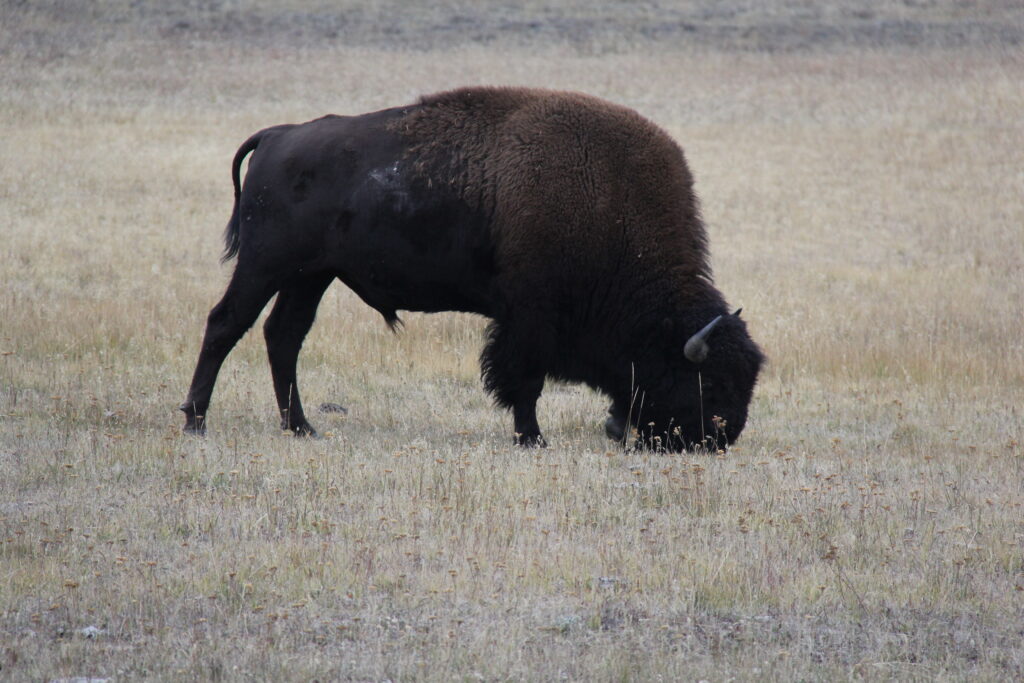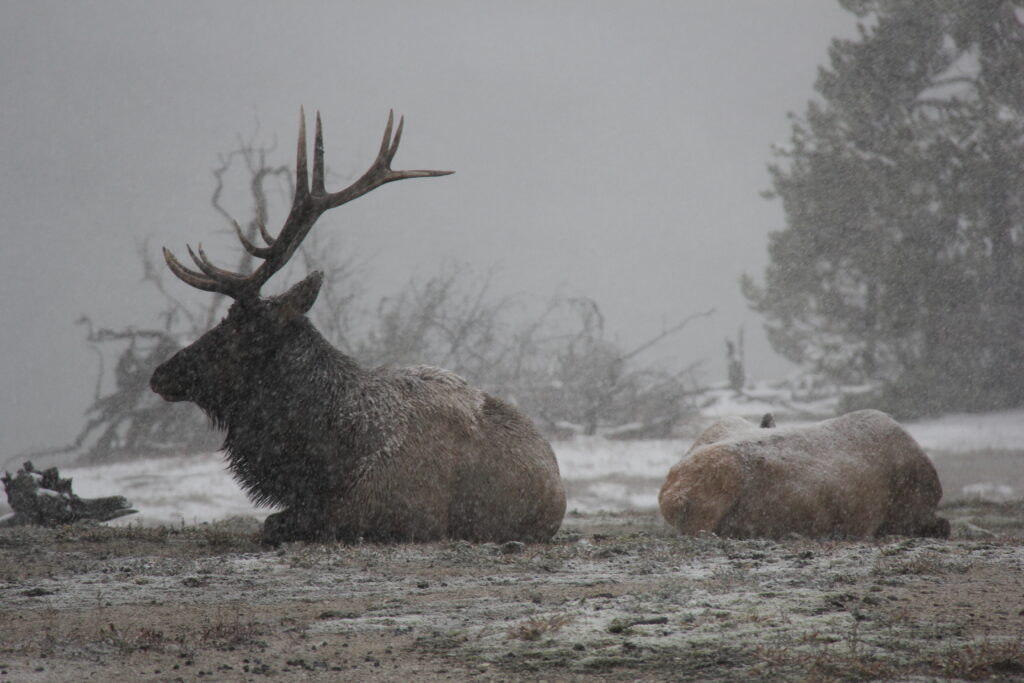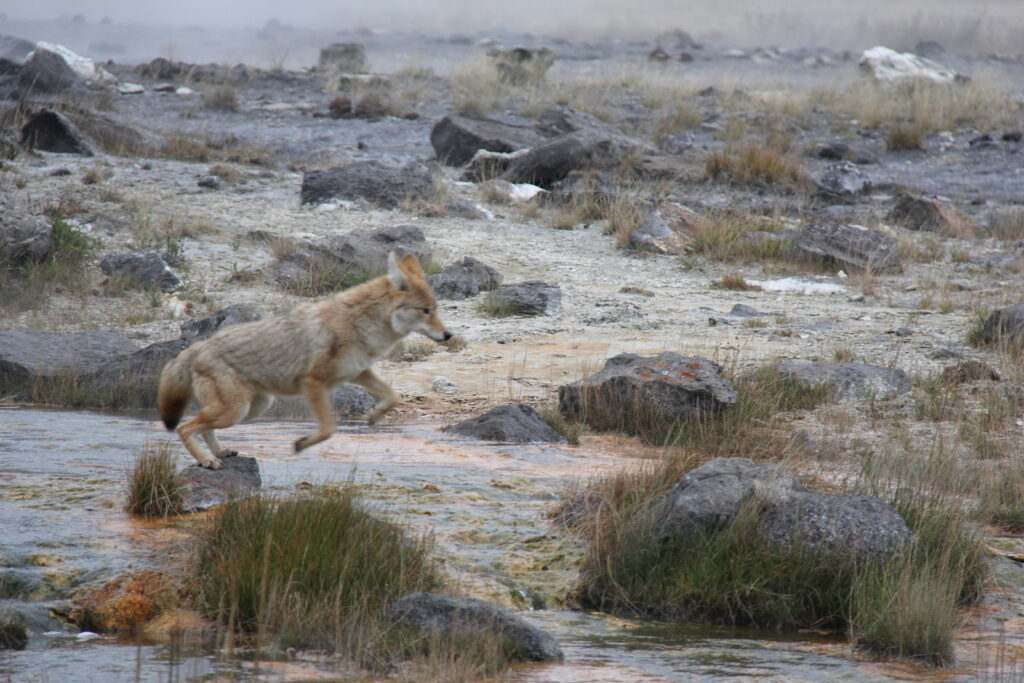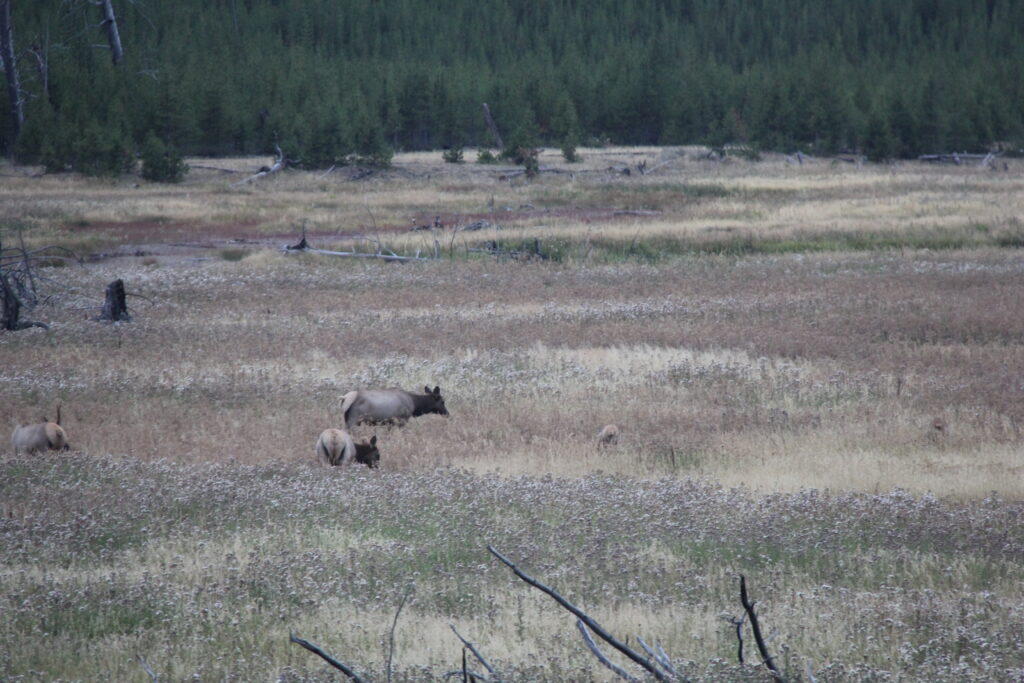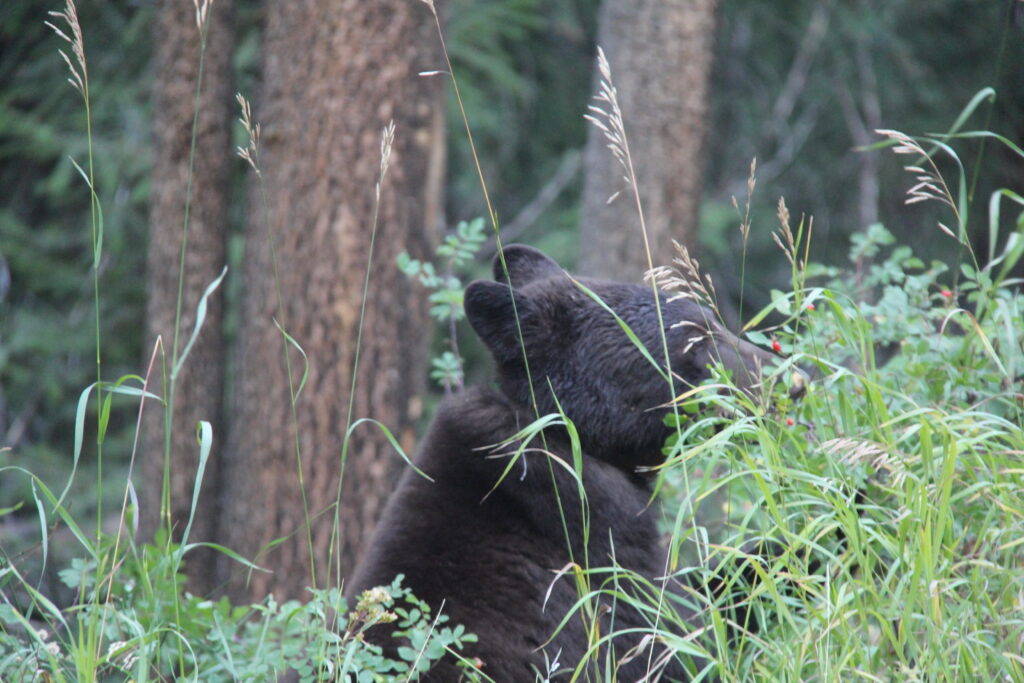Yellowstone National Park is located in the northwest corner of Wyoming, and includes small areas of Montana and Idaho as well. There is no thermal park in the world that is as awe inspiring as Yellowstone. It is a wonderland for all age groups and this is one place that you will want to visit often.
Some information on Yellowstone National Park that will help in planning your trip :
- Airport – There are quite a few airports close to Yellowstone entrances. We flew into Idaho falls which is about 110 miles from the west entrance
- Stay – We stayed in a beautiful 2-bedroom lodge 1-mile from the west entrance.
- There are 5 entrances to Yellowstone – East, West, North, South, and Northeast.
- Month visited – We visited the park in the middle of September. It was not crowded and we got parking easily at all the major attractions. Being at a high elevation (8000 ft), the weather can be unpredictable in September. On Day 1, the temperature was in the 60s(F). On Day 2, the weather turned really cold with a lot of snowfall overnight.
- During the summer months (June-August) Yellowstone experiences very large crowds. There will be significant traffic, long lines at popular attractions, and limited parking availability at major landmarks like Old Faithful.
- How many days – 5 days in Yellowstone will be ideal if you want to cover all the attractions without being rushed. You can even squeeze in a visit to Grand Teton National Park.
- Smell in Yellowstone – Be prepared to inhale/smell a lot of Hydrogen sulfide a colorless, flammable gas with a strong odor of rotten eggs. It’s emitted from thermal features like geysers, mud pots, and fumaroles.
- Constantly changing geyser – Yellowstone geysers are constantly changing their behavior mainly due to climate changes. Geysers can die off or new ones can form as the hydrothermal plumbing system evolves. Changing weather patterns and temperature extremes could cause geysers to erupt less frequently or even go extinct.
- Map of Yellowstone – The grand loop which is in the shape of 8 is 142 miles long with many points of interests. Many of the attractions have boardwalks and hiking trails that offer close up view of the geysers. Driving the entire length can take between 5 hours or more depending on traffic. In the summer months, traffic can be stop-and-go the entire way, with Bisons crossing the road or people just stopping to get a view of a roadside geyser.
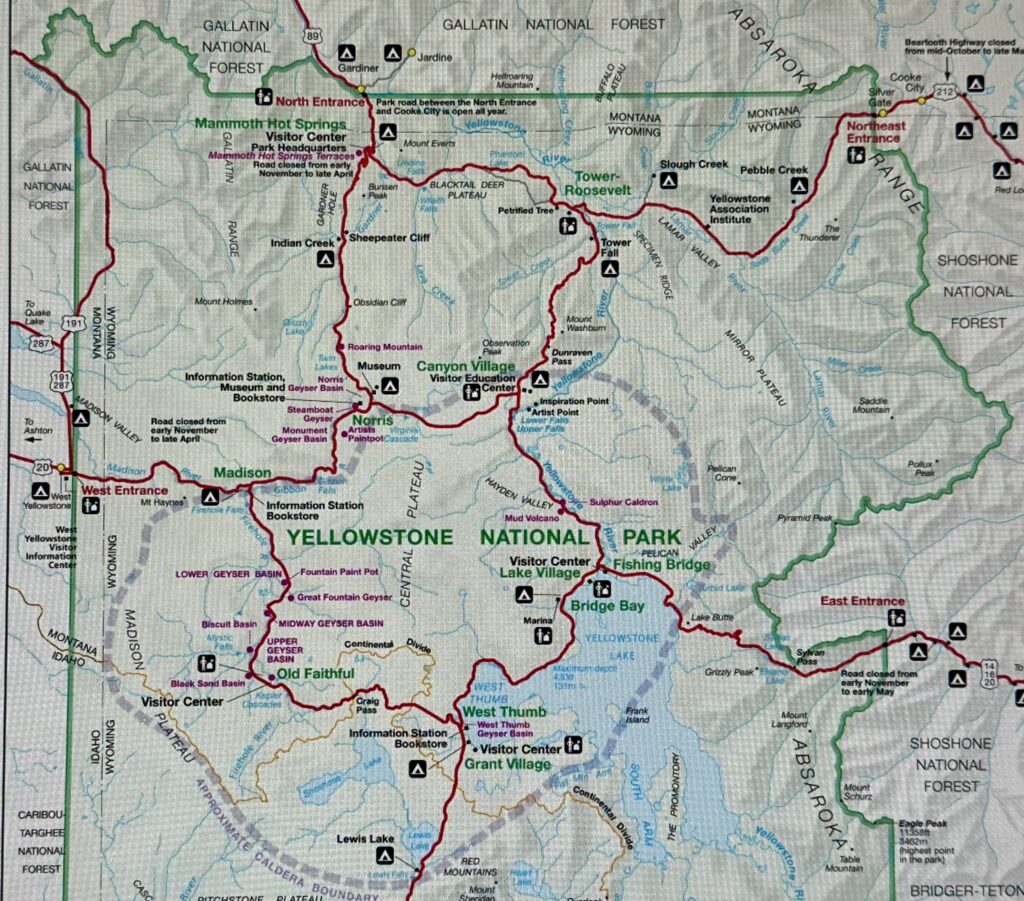
Note: We spent 3 days and were able to cover 75% of the attractions as the park was not too crowded in mid-September. The pictures were taken when we visited the park in 2017. Many of the geysers, basins, pools etc. may have changed since.
Thermal features you will see in Yellowstone
- Geysers – The most spectacular and dynamic features of the park, occur when underground constrictions increase the pressure on the heated water. Eventually, the pressure exceed the ability of the constriction to hold the water until it finally erupts. Some geysers erupt on a regular schedule like Old Faithful and some continuously.
- Fumaroles – Similar to geysers, except that the water emerges as steam and not hot water. Driving through the park, you will see fumaroles along the side of the road, edge of a lake, or from cracks in rocks off the shoulder of park roads. It will look like someone left the tea kettle boiling.
- Hot Springs – Open pools of very hot water, around 190 degrees F. They are not geysers because the flow of hot water to the surface is not constricted. The water that does not evaporate, flows over the edges of the pool of the spring and seeps back into the soil. These pools are often colored around the edges due to bacteria that thrive in the harsh hot, acid conditions of the spring. You will see steam rising from these springs.
- Mudpots – Hot acidic underground water seeps to the surface through cracks in rocks. The acidic nature of the water breaks down surrounding rocks, turning them into mud. Eventually the heat-and-acid-loving bacteria begin to grow in the hot damp mud, creating a palette of colors, hence some mudpots are also referred to as paint pots.
Lodging in and around Yellowstone – We stayed in a log-cabin (Don’t remember the name) that was 1-mile from the west entrance to Yellowstone. Very comfortable 2-bedroom lodge with kitchen and dining area and reasonably priced, probably because we were there during mid-September, low-peak time.
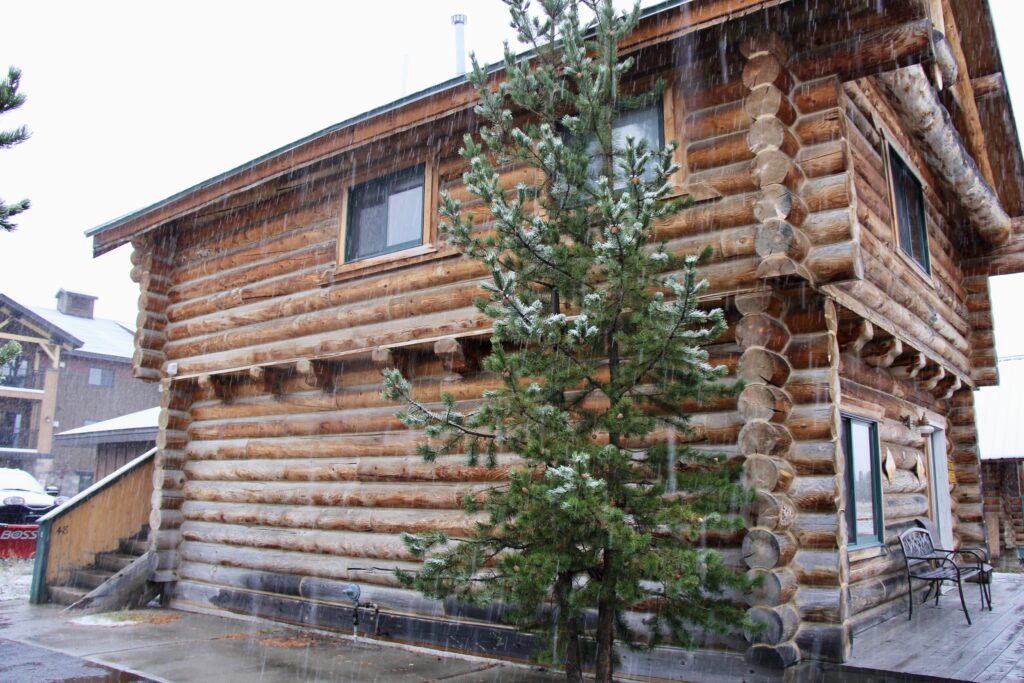
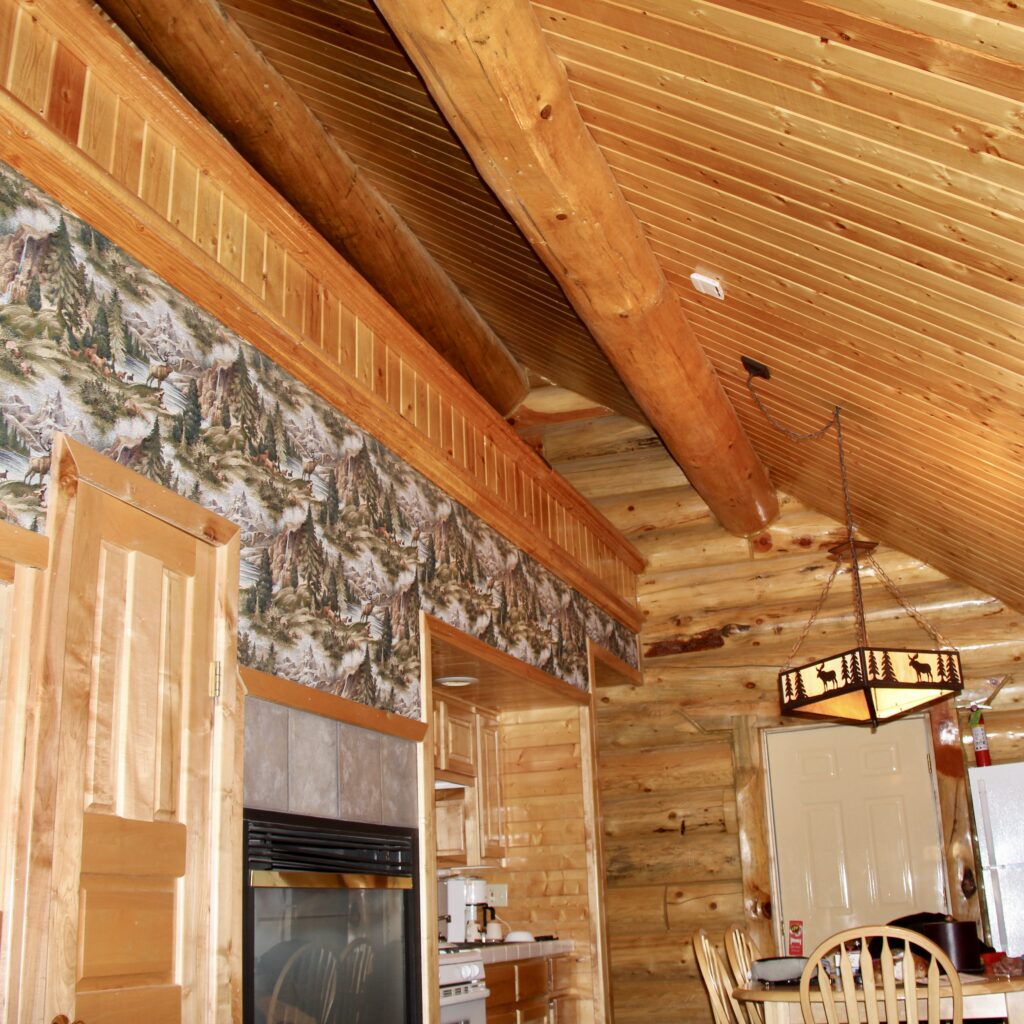
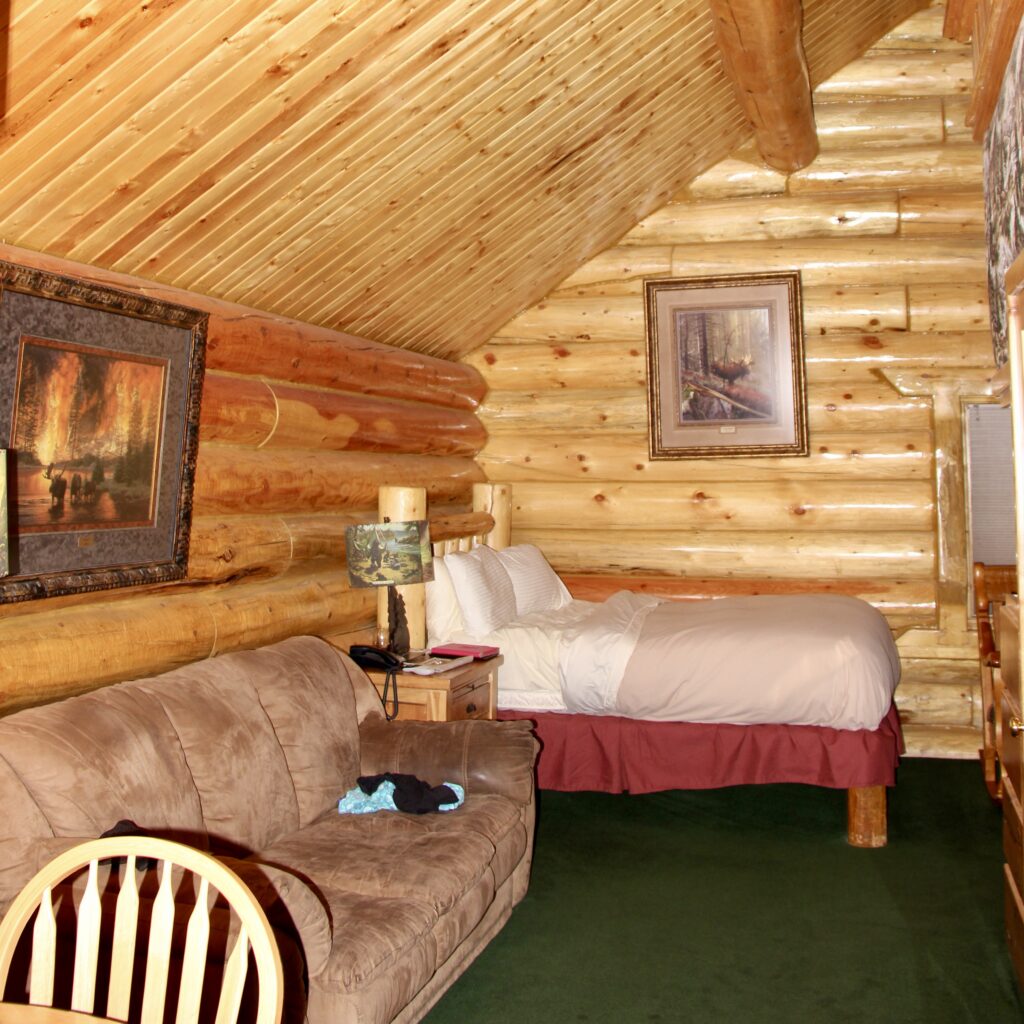
Old Faithful inn – This is the most popular facility inside the park and a national historic landmark. Built in 1903-1904 with local logs and stone, the Inn is one of the largest log-style structures in the world. The towering lobby features a massive stone fireplace and a hand-crafted clock made of copper, wood, and wrought iron serving as focal points. With 327 rooms, the Old Faithful Inn is open from early May until mid-October and features a full-service restaurant, lounge, snack bar, gift shop and daily tours.
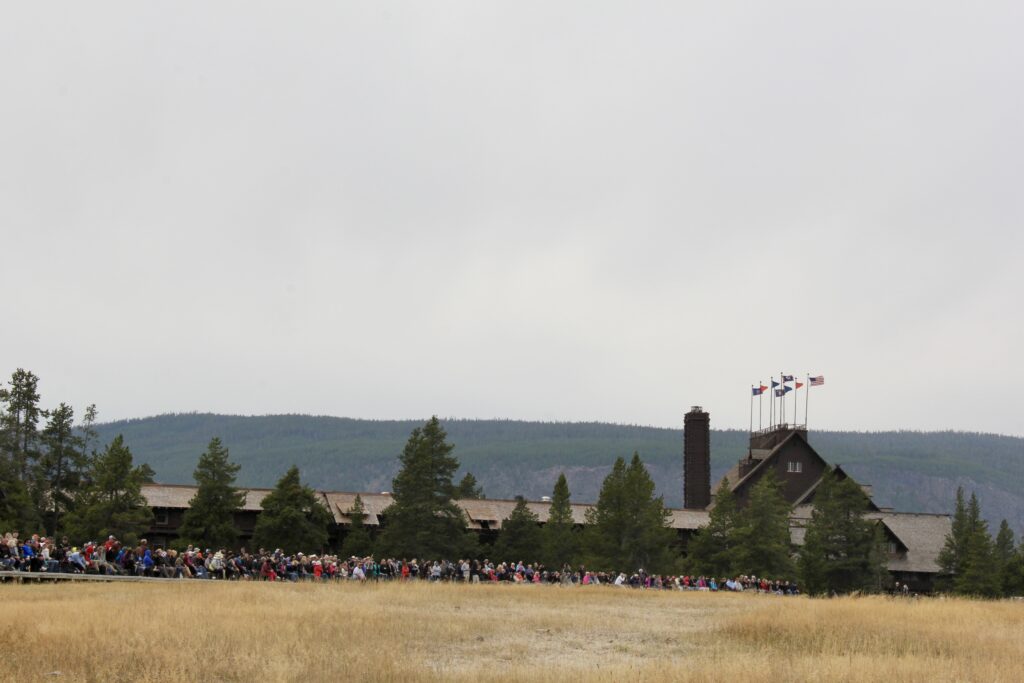
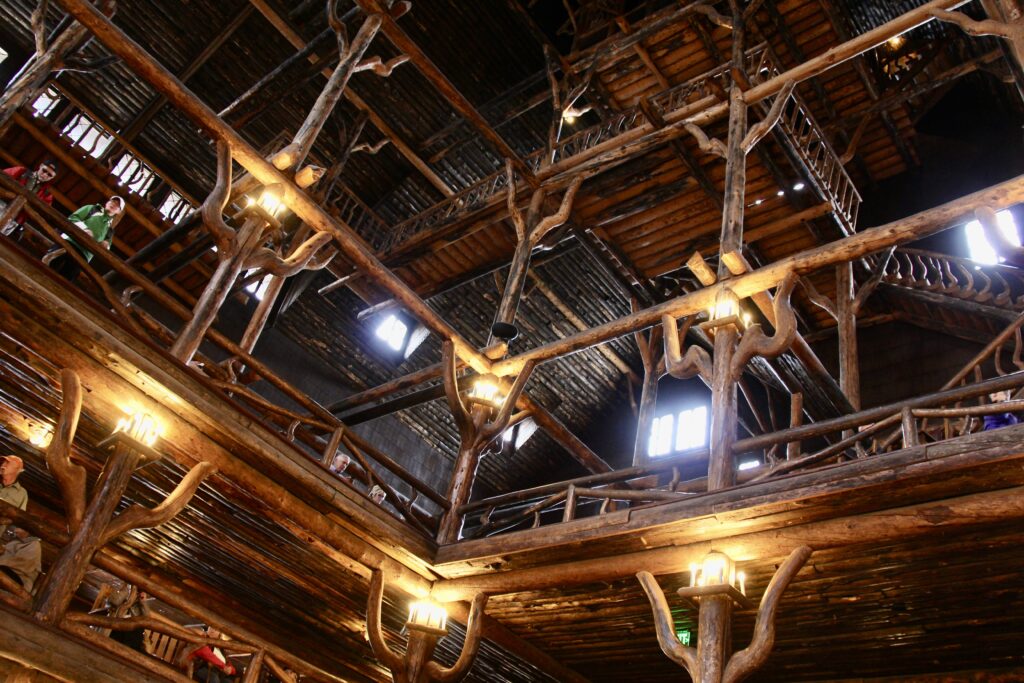
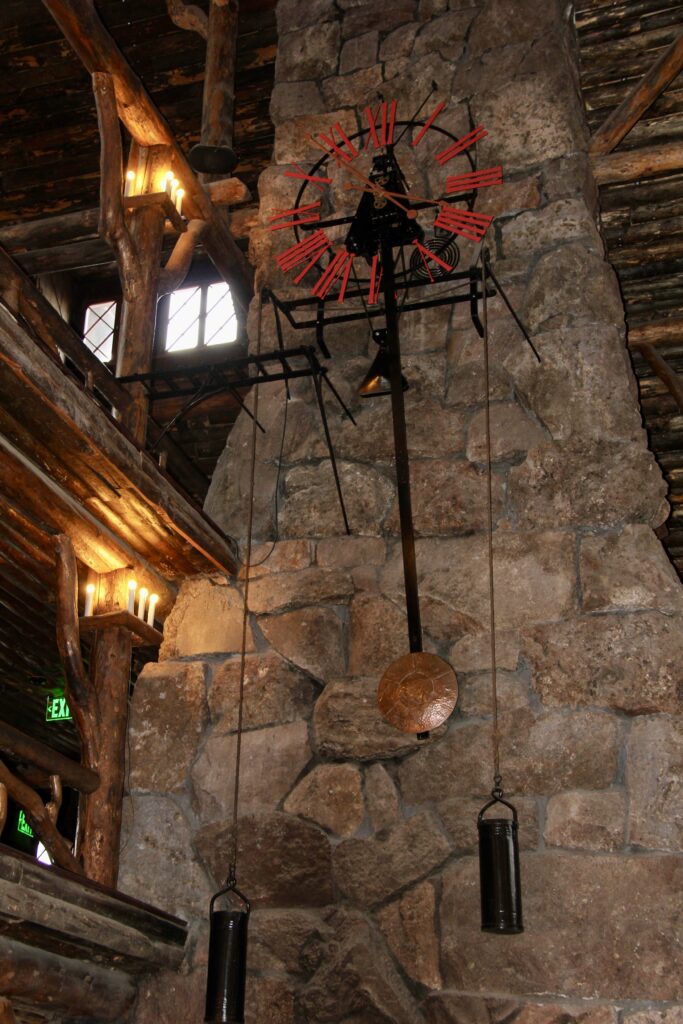
There is also the Old Faithful Lodge which is a few yards from the inn and have cabins which are a lot cheaper than the ones at the Old Faithful Inn.
The main difference between the lodge and the Inn: 1. The inn is national historic landmark 2. You get amazing views of the geysers and surrounding areas at the Inn 3. Rooms are much more expensive at the Inn.
Day 1 – We visited the attractions on the west – from Norris to Old Faithfull (see map).
Gibbon Falls – You will come across the Gibbon falls within a few miles after you enter the Yellowstone park from the west entrance. Gibbon Falls drops 84 feet (25.6 m) over a remnant of the Yellowstone caldera rim.
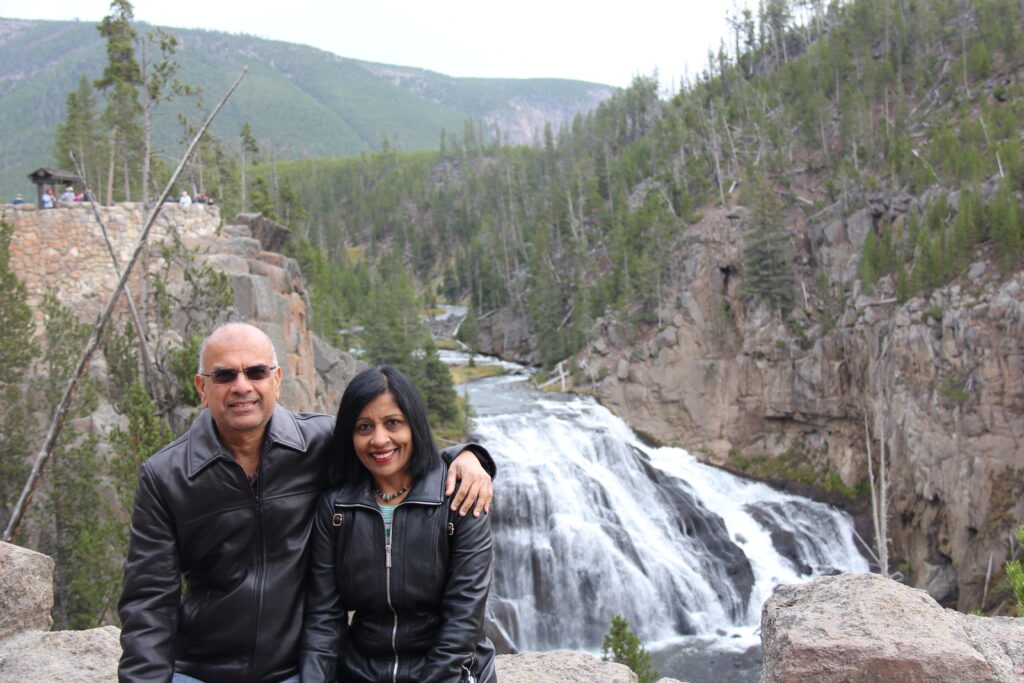
Driving through the park, be prepared to come across many fumaroles or steam rising from cracks in rocks off the shoulder of the road and people stopping their car to see them.
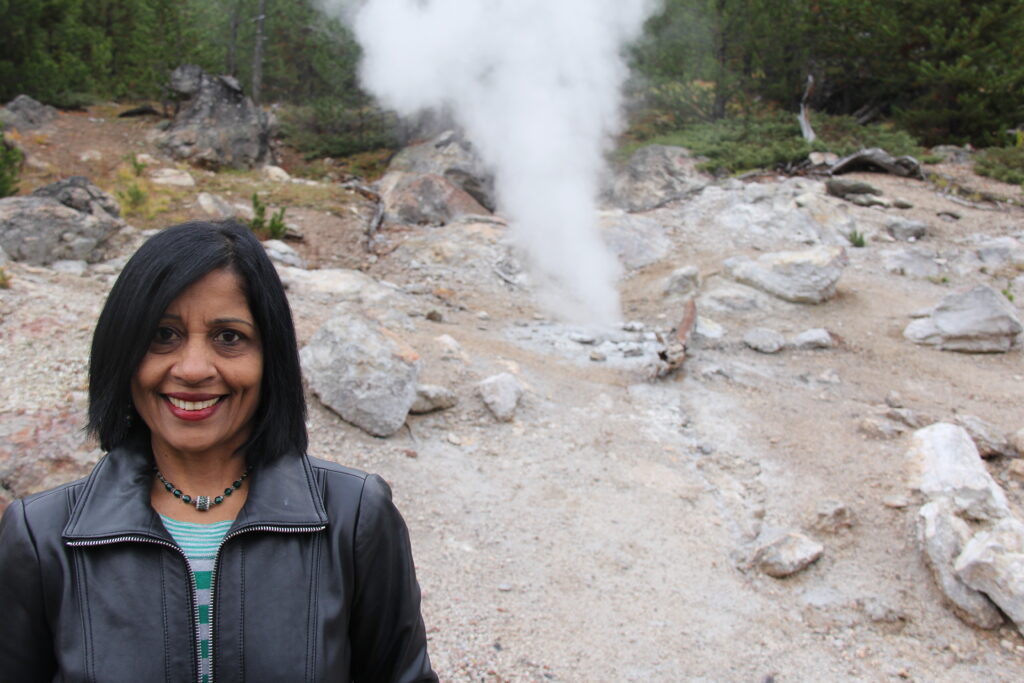
Norris Geyser Basin – is the the hottest geyser basin in Yellowstone. Norris Geyser Basin is constantly changing. New geysers are born, old ones die. Even the major geysers change from year to year. This makes Norris an interesting place to study but a difficult place to predict.
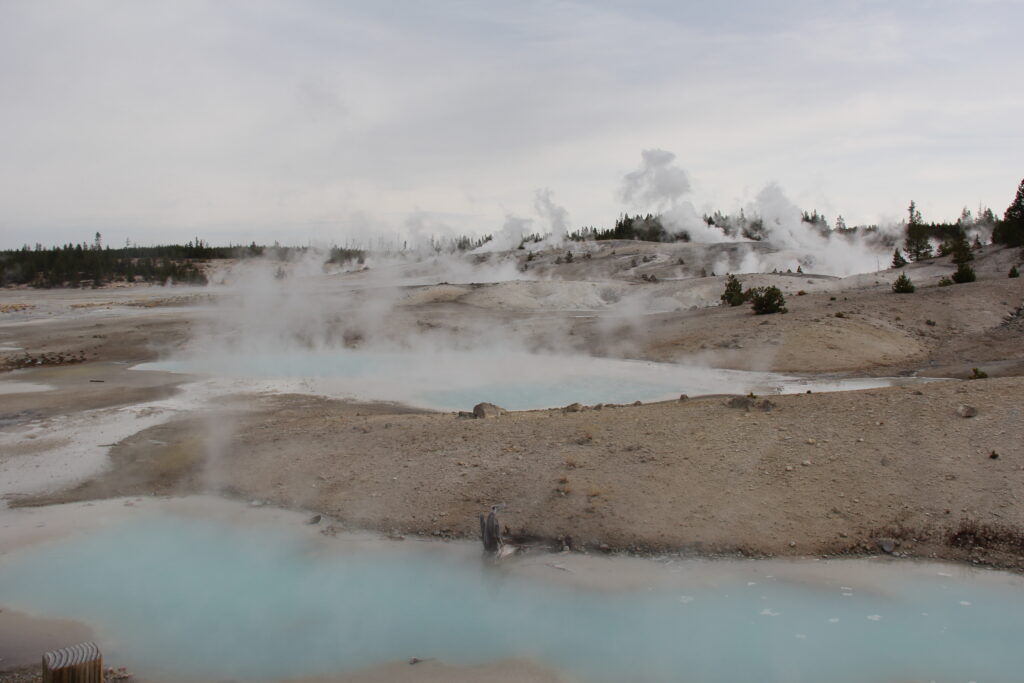
Norris Geyser Basin, Emerald Pool – It gets its name from the green-blue water color. Created from a mix of filtered sunlight in the water and a reflection from yellow sulfur deposits and algae, the emerald hue has drawn admiration (albeit a brief one) for a few hundred years.
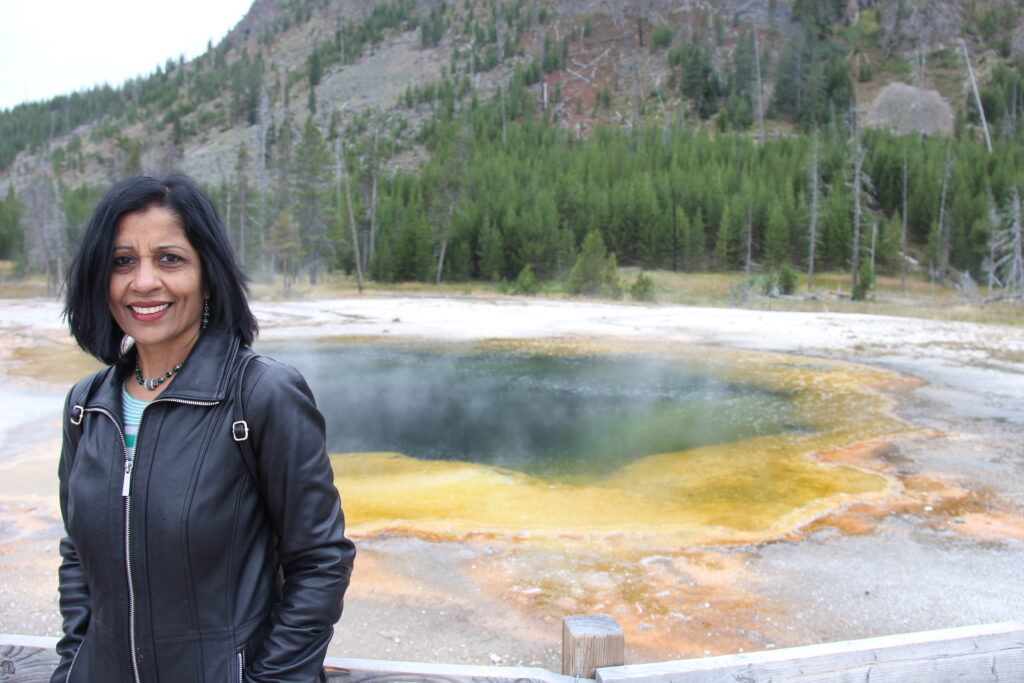
Norris Geyser Basin, Cistern Spring – is a blue-green pool with constant overflow. Its waters deposit as much as half an inch of sinter a year. The silica-rich water of Cistern Spring has killed many of the trees around.
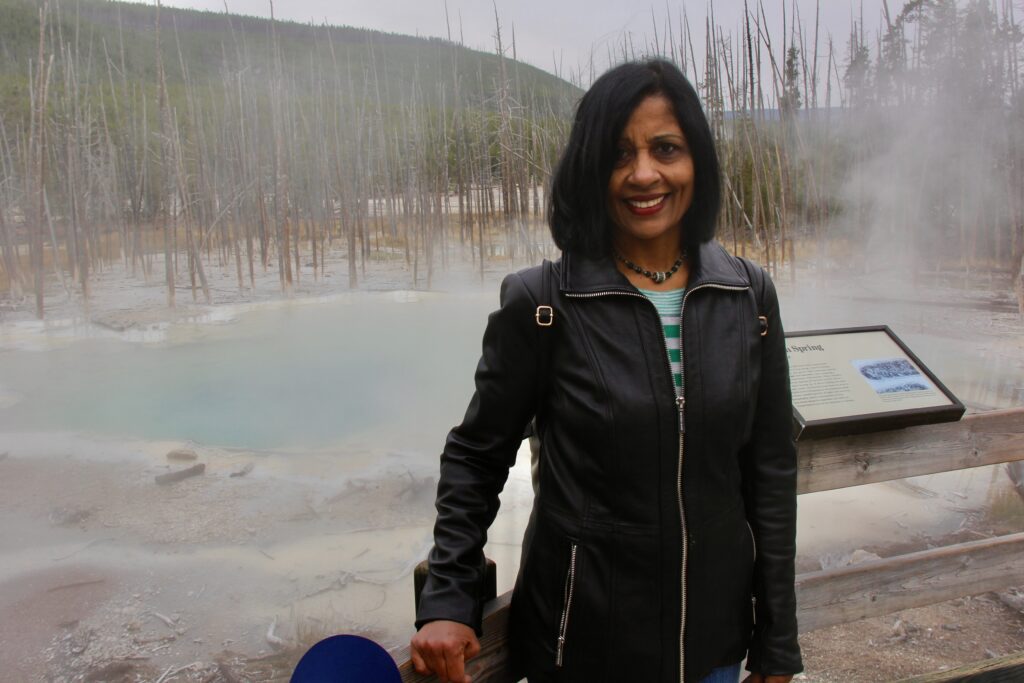
Artists Paintpot – Artists Paintpot is located just south of Norris Geyser Basin. From the parking lot a one-mile (1.6 km) loop trail takes you to this area where you will see pastel-colored mud and springs, bubbling and gurgling under a blanket of steam.
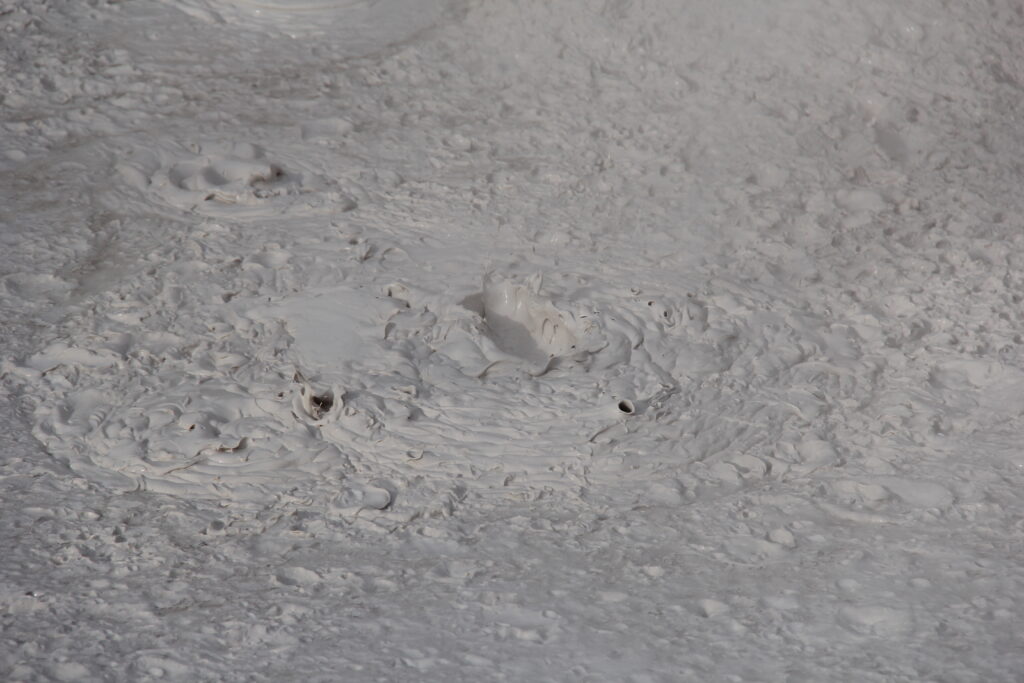
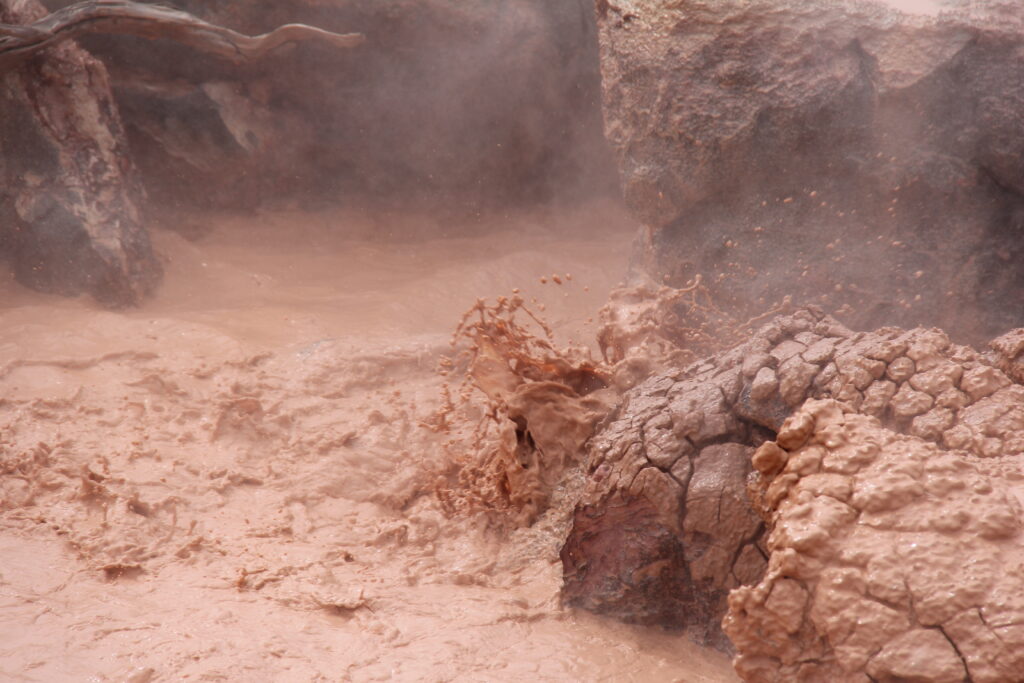
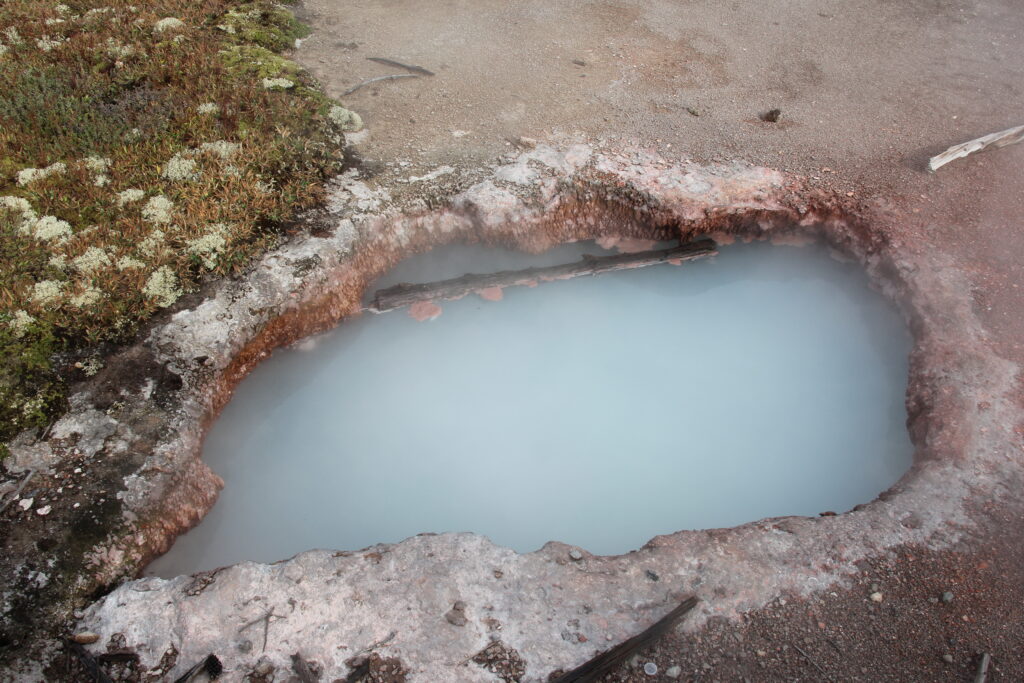
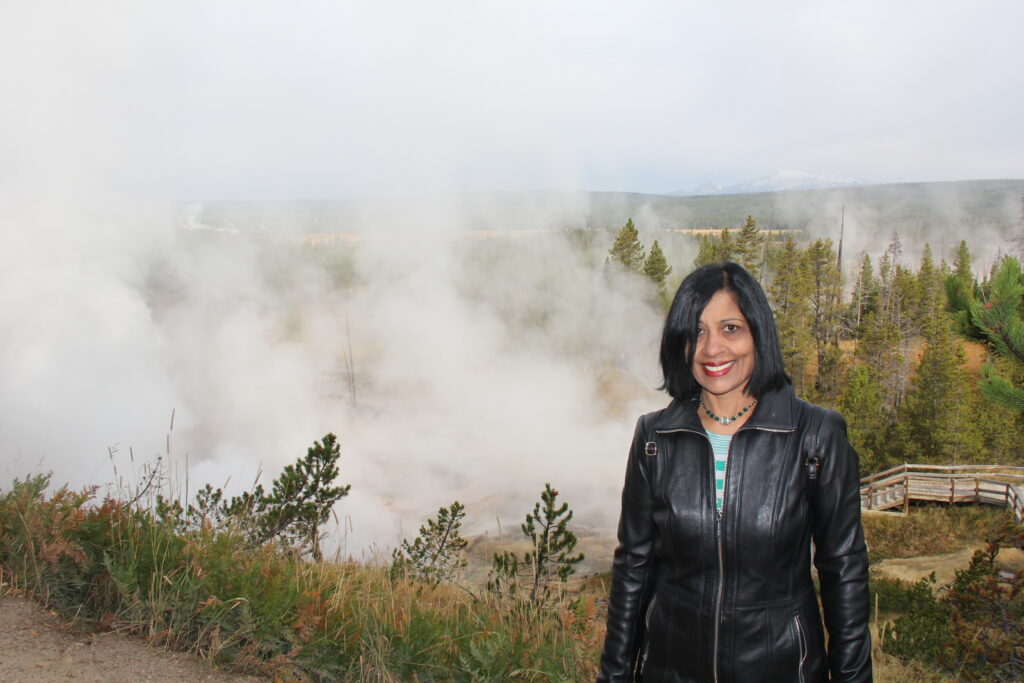
Lower and Midway Geyser Basin – After we explored Norris Geyser Basin and Artists Paintpot, we drove south and spent some time in Lower and Midway geyser basins. The famous Grand Prismatic Spring is located in Midway Geyser Basin.
Midway Geyser Basin, Excelsior Geyser Crater – This 200 by 300 foot geyser is located in Midway Geyser Basin and is huge with deep blue boiling water. There was a lot of steam rising from the geyser. Although it is mostly dormant now, it was very active in the 1880s.
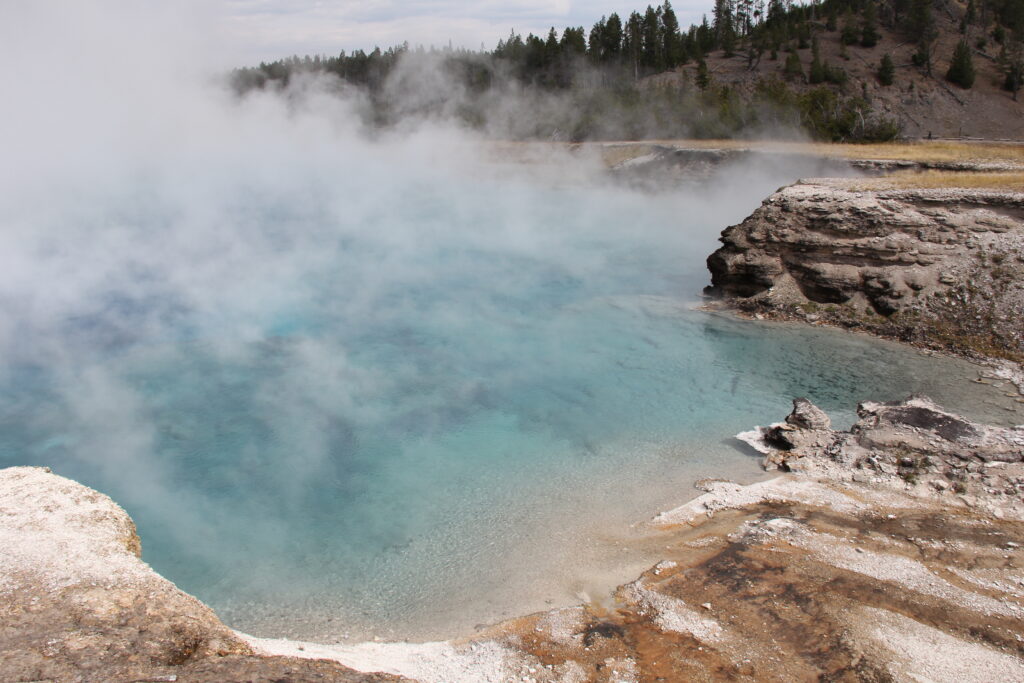
Midway Geyser Basin, Firehole River – The Excelsior Geyser is constantly discharging more than 4,000 gallons of water per minute into the Firehole River.
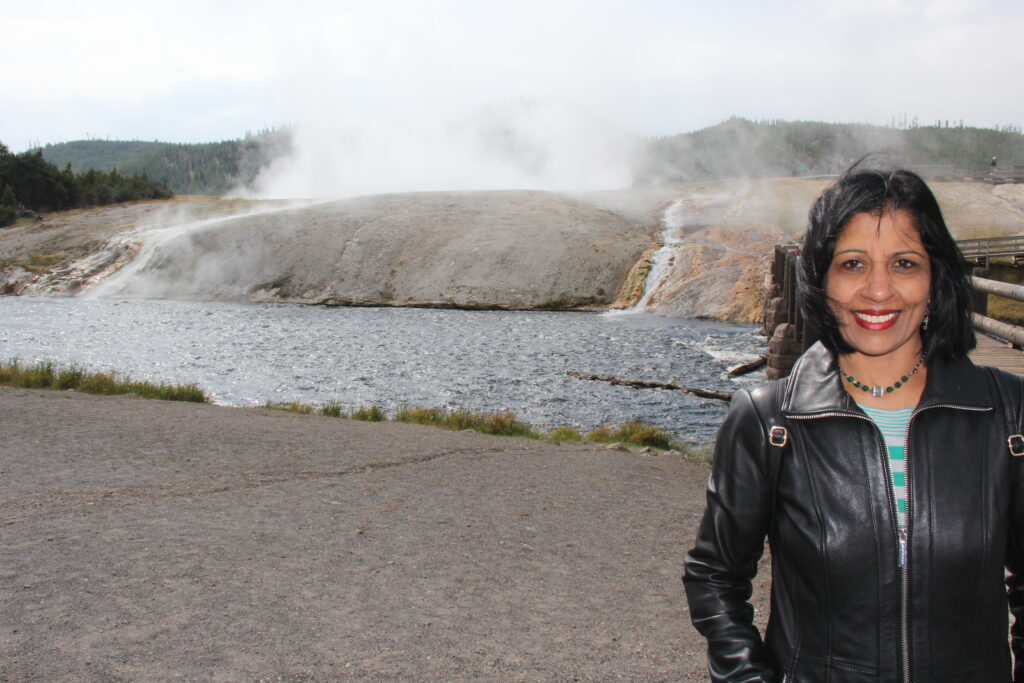
Midway Geyser Basin, Grand Prismatic Spring – is Yellowstone’s largest and most popular hot spring, about 200-330 feet in diameter and more than 121 feet deep. The picture we took (see below) was a close up view and does not give a feel of its beauty due to the steam. To get the best view of the Spring, take the Grand Prismatic Overlook Trail which is a 1.5 mile out and back path which is accessible from the Fairy Falls Trailhead. The overlook will give you an unobstructed view of the spring and its vibrant colors due to its elevated vantage point.
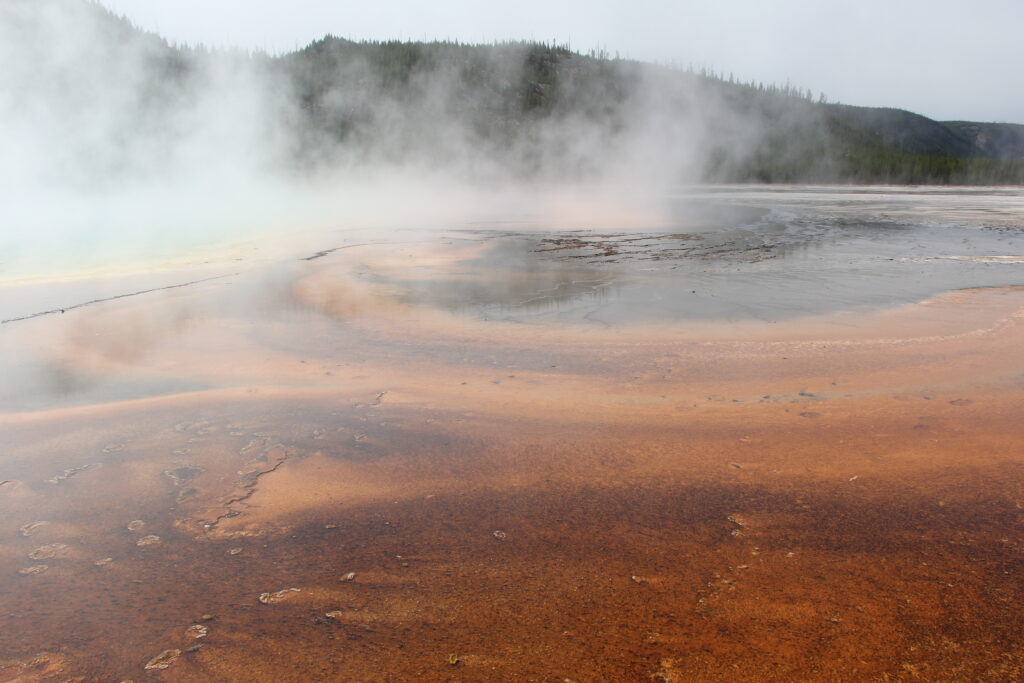
Upper Geyser Basin – in Yellowstone National Park, the Upper Geyser Basin contains the highest concentration geysers like the famous Old Faithful geyser and the oldest Castle geyser. Other geysers here include Grand, Daisy, Riverside, and Morning Glory.
Upper Geyser Basin, Old Faithful: This is the most photographed attraction in Yellowstone. It is also most impressive when it erupts steam and water up to 180 feet into the sky. Eruptions last around one to five minutes. Its name comes from the geyser’s predictability.
The boiling water shooting from Old Faithful sends out up to 8,400 gallons. Eruptions take place between 45 to 110 minute intervals and predicted times are posted in many places around Old Faithful.
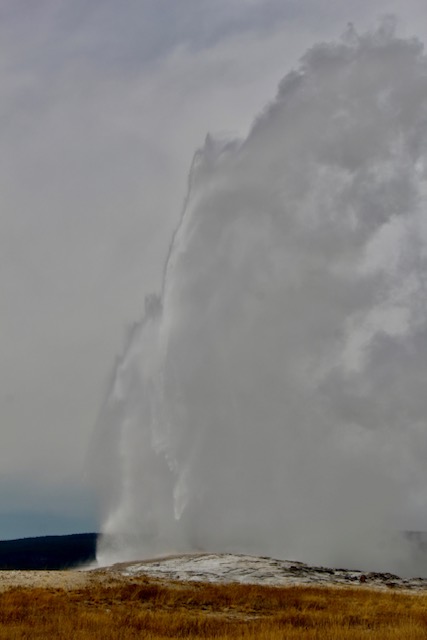
Upper Geyser Basin, Castle Geyser – has the largest cone and may be the oldest of all geysers in the basin. Its eruption pattern has changed considerably throughout its recorded history.
Castle is currently erupting about every 10 – 12 hours. A water eruption frequently reaches 90 feet (27m) and lasts about 20 minutes. The water phase is followed by a noisy steam phase lasting 30 – 40 minutes.
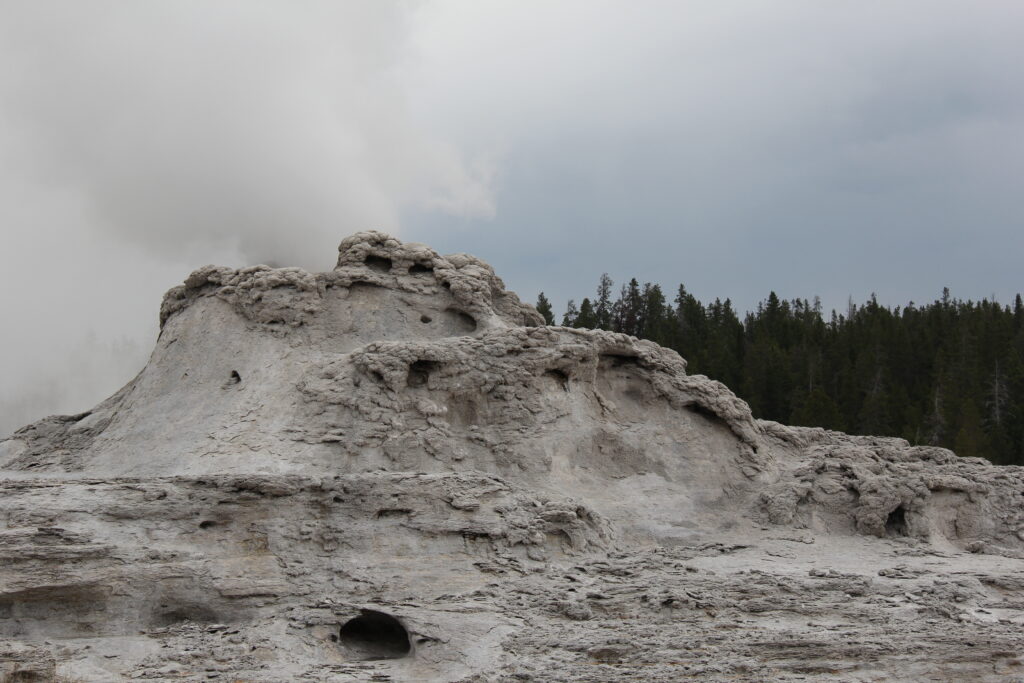
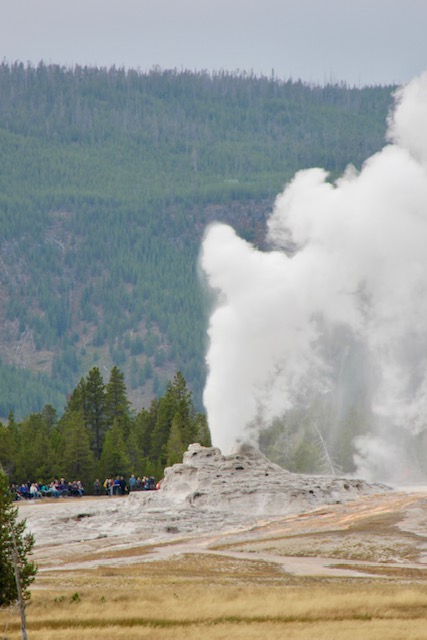
Day 2 – Grand Canyon of Yellowstone, West Thumb, Tower Falls – There was a lot of snowfall overnight and we had to wait for the roads to be cleaned and salted before we could enter the park. We covered the eastern section from Tower Falls in the Northeast all the way down to West Thumb in the south.
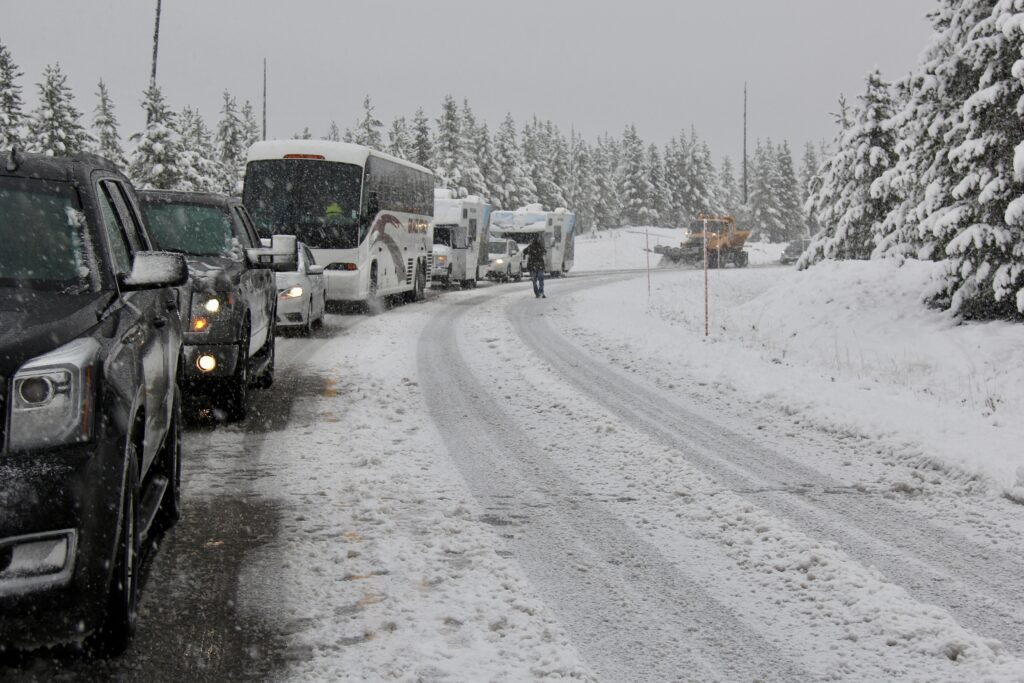
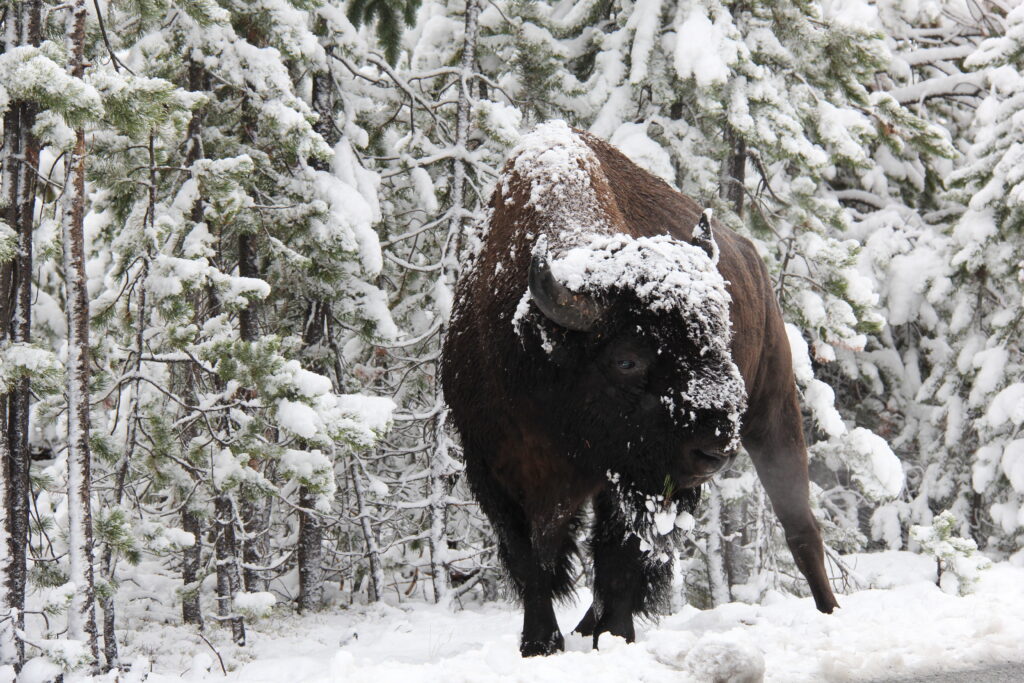
The Upper Falls, Lower Falls, and Artist’s Point Trail is a popular trail in Yellowstone (3.8 miles round trip). Upper Falls – 109 ft; Lower Falls – 308 ft. The canyon bends between the Upper and Lower Falls, so there is no location where they can be seen at the same time. The canyon(also called the Grand Canyon of Yellowstone) is roughly 20 miles long, more than 1,000 feet deep, and 1,500 to 4,000 feet wide. Artist’s Point is a great place to get an incredible view of Yellowstone Canyon and the Lower Falls.
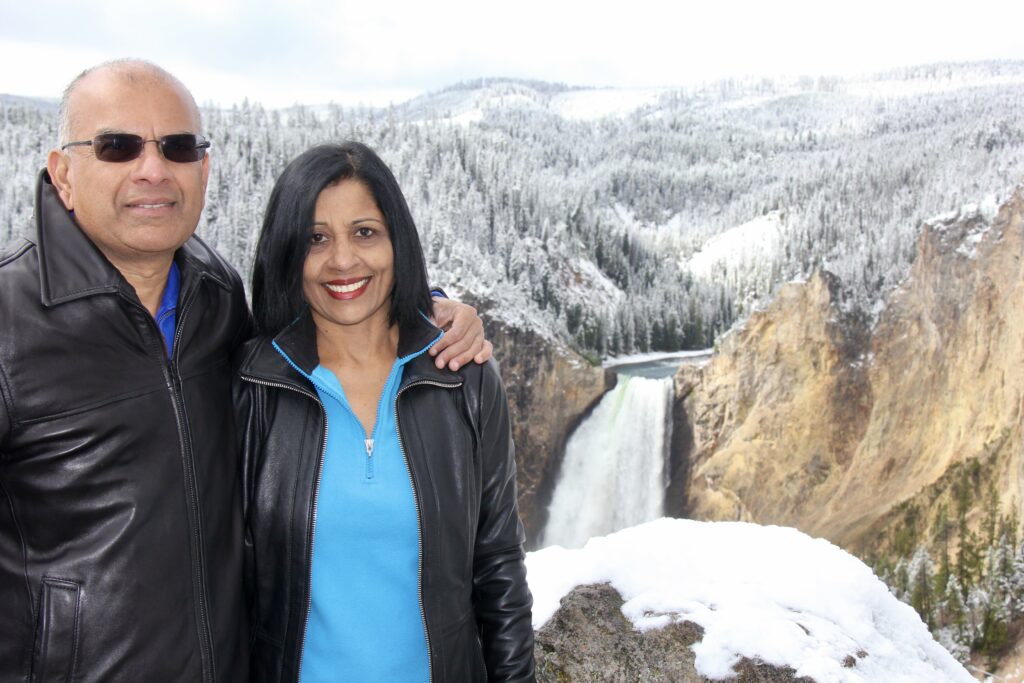
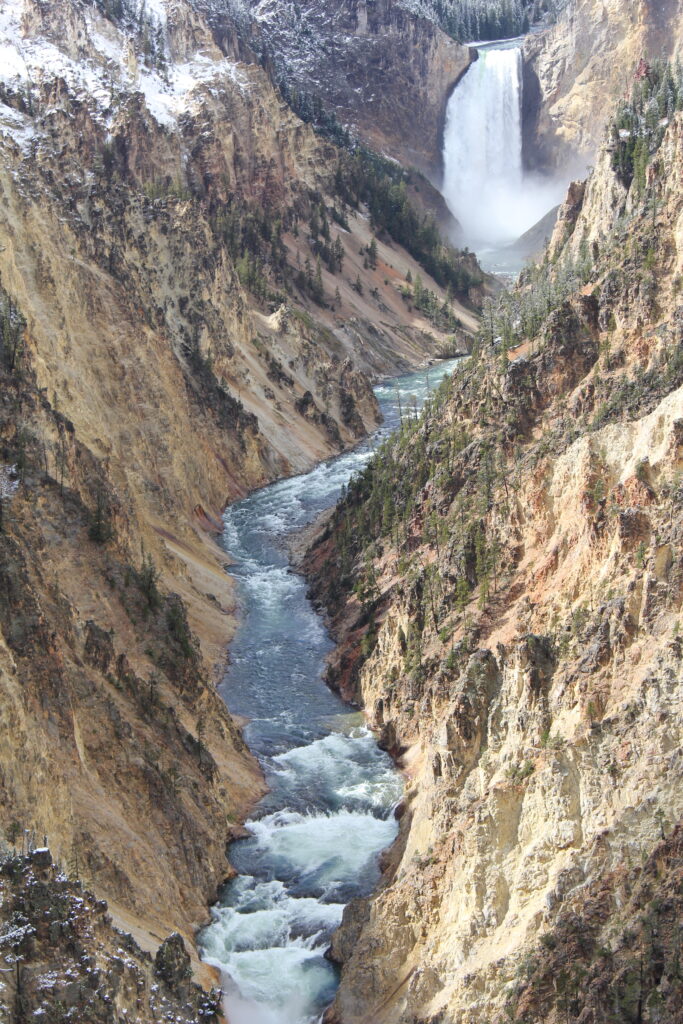

West Thumb – West Thumb Geyser Basin is one of the smallest geyser basins in Yellowstone, but is very scenic due to its location along the shore of Yellowstone Lake. West Thumb derived its name from the thumb-like projection of Yellowstone Lake.
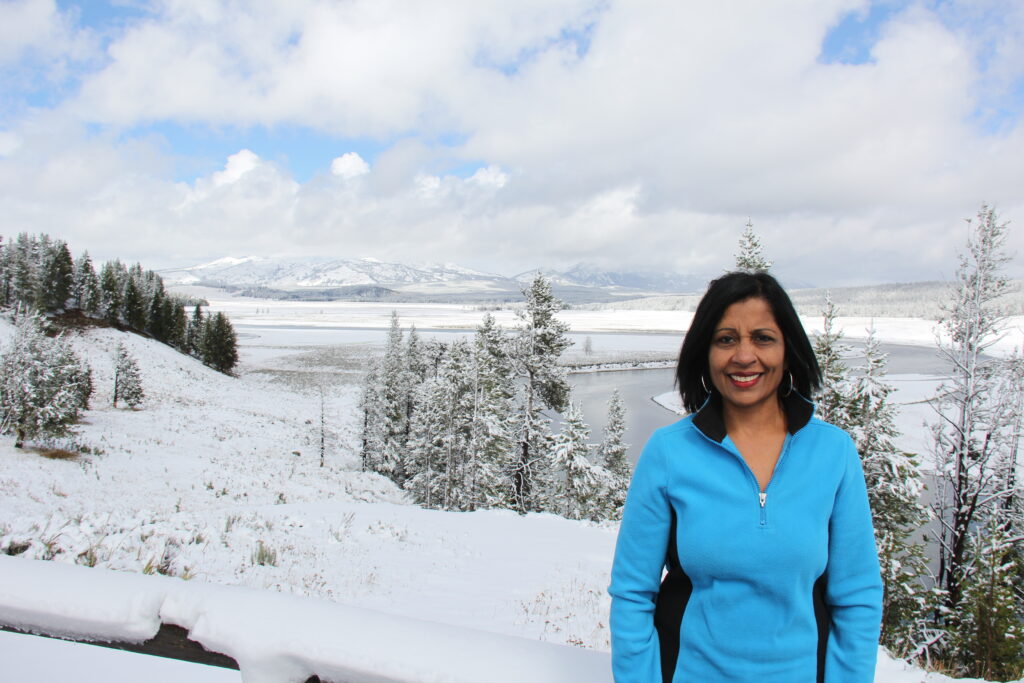
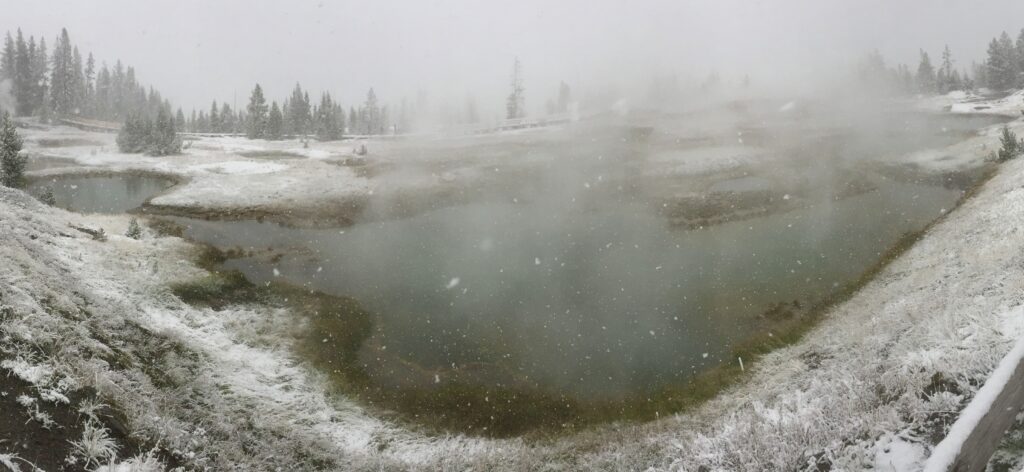
Dunraven Pass – Driving north towards Tower Falls, you will go past Dunraven Pass which is the highest road in Yellowstone at an elevation of 8,859 feet (2,700 m). In the summer, one can hike to Mount Washburn from a trail starting here – 6 mile roundtrip, 1393 ft/425 m elevation gain, strenuous rating. The panoramic views from the trail and summit are supposed to be gorgeous.
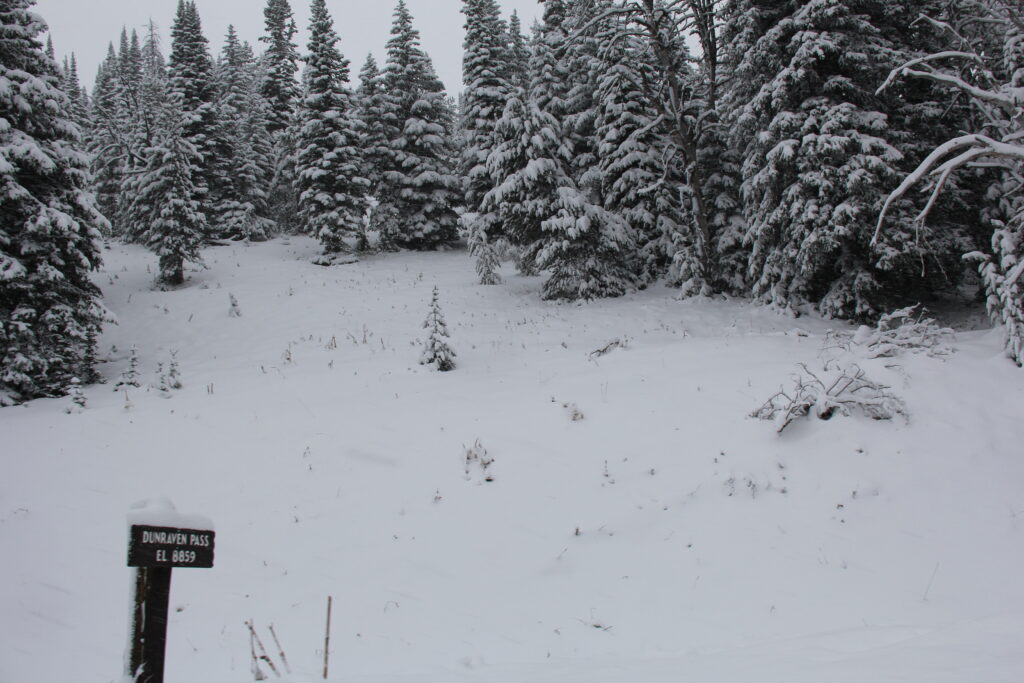
Tower Falls – The water falls from a height of 132ft. The overlook to the falls is a short walk from the parking lot. Many years ago, you could hike down to the base of the falls. You cannot do so anymore.
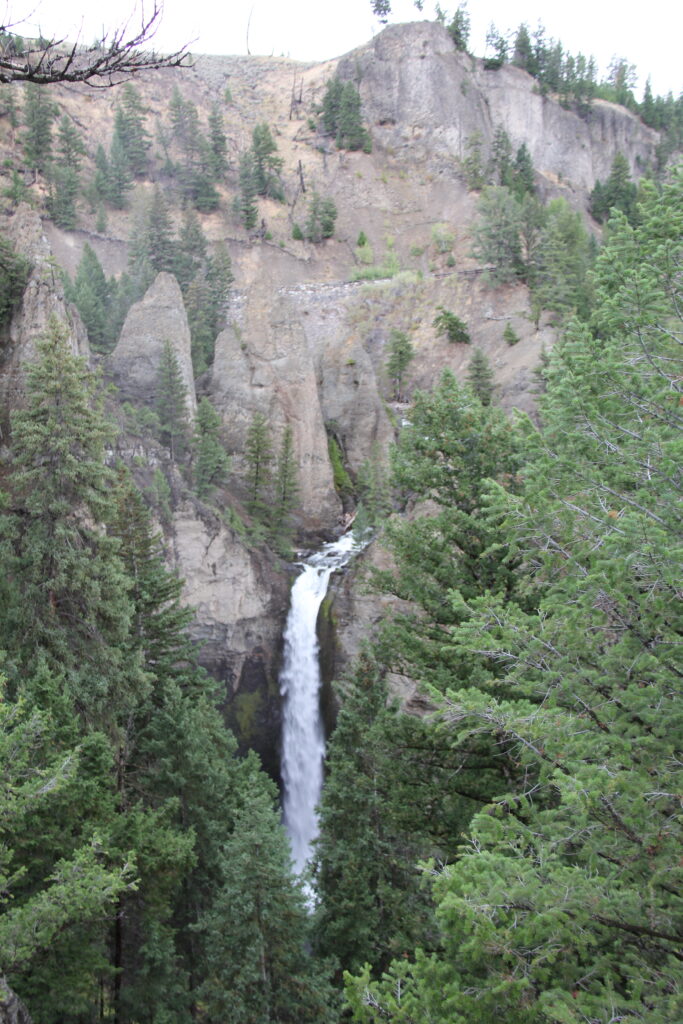
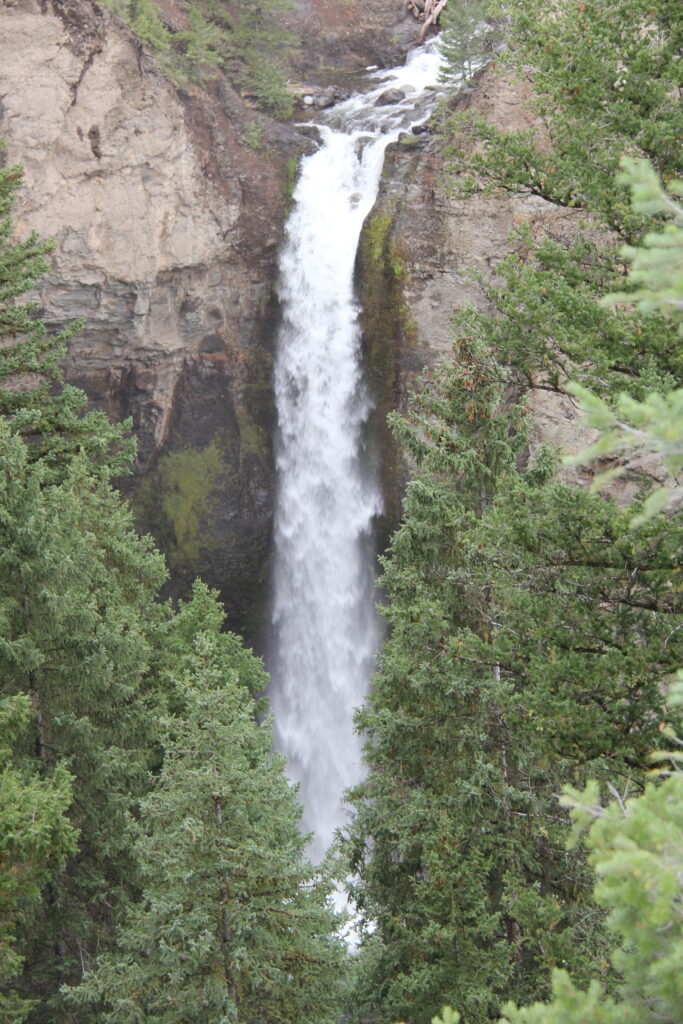
Day 3 – Mammoth Hot Springs – When we visited the park, the grand loop road inside the park from Norris to Mammoth Hot springs (see Map) was closed due to construction. We drove on 191-north, then onto I-90 east, then onto 89-south and entered the park from the North Entrance which was open.
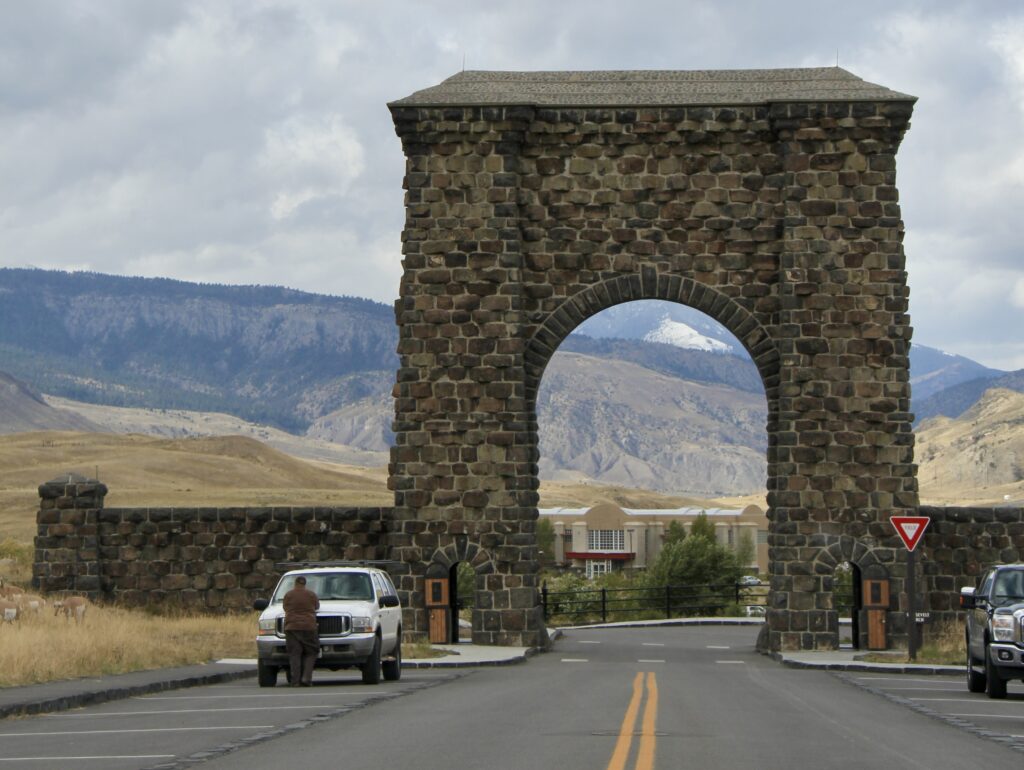
Mammoth Hot Springs is known for its distinctive white travertine terraces formed over thousands of years as hot water rich in dissolved calcium carbonate cools and deposits the minerals on the surface creating a landscape of cascading tiered formation.
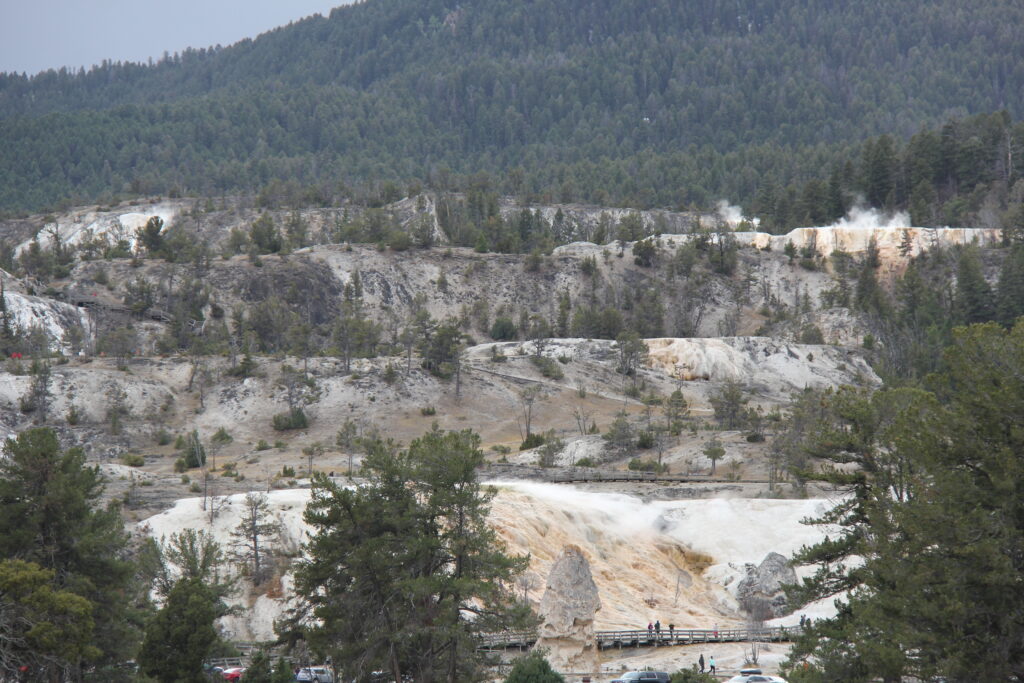
Liberty Cap – This 37-foot (11-m) hot spring cone is one of the first attractions you will come across in Mammoth Hot Springs. Liberty Cap is one of Yellowstone National Park’s most iconic geothermal features and a natural marvel and was named in 1871 by the Hayden Survey party because of its marked resemblance to the peaked caps worn during the French Revolution.
Its unusual formation was created by a hot spring whose plumbing remained open and in one location for a long time. Its internal pressure was sufficient to raise the water to a great height, allowing mineral deposits to build continuously for perhaps hundreds of years.
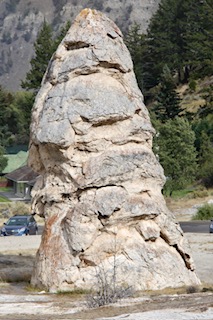
The colors of Mammoth Hot Springs in Yellowstone National Park are created by microorganisms called thermophiles and algae that live in the hot water. The colors include brown, rust, red, green, yellow, white.
- Dark brown, rust, and red: Thermophile bacteria that thrive in hot water
- Green: Algae that grow in cooler water
- White: Inactive areas where no water flows, leaving only travertine
- Blue: Sunlight scatters in the water’s surface, with blue light scattering the most

Devil’s Thumb – in Mammoth Hot Springs Lower Terrace is a cone-shaped hot spring deposit, basically a small inactive geyser cone resembling a thumb, and is considered one of the most notable features of the lower terrace area alongside Palette Spring; both are formed by travertine deposition from mineral-rich hot spring water flowing down the hillside.
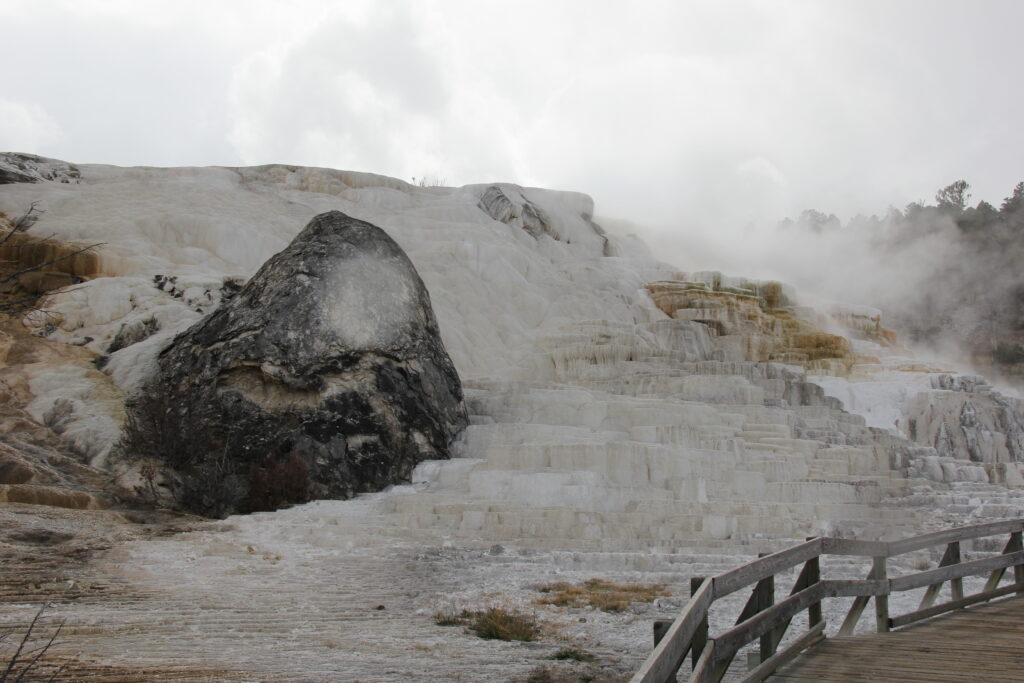
Canary Spring – is named for its bright yellow color which is similar to the feathers of a canary bird. The spring’s yellow color comes from sulfur-dependent filamentous bacteria.
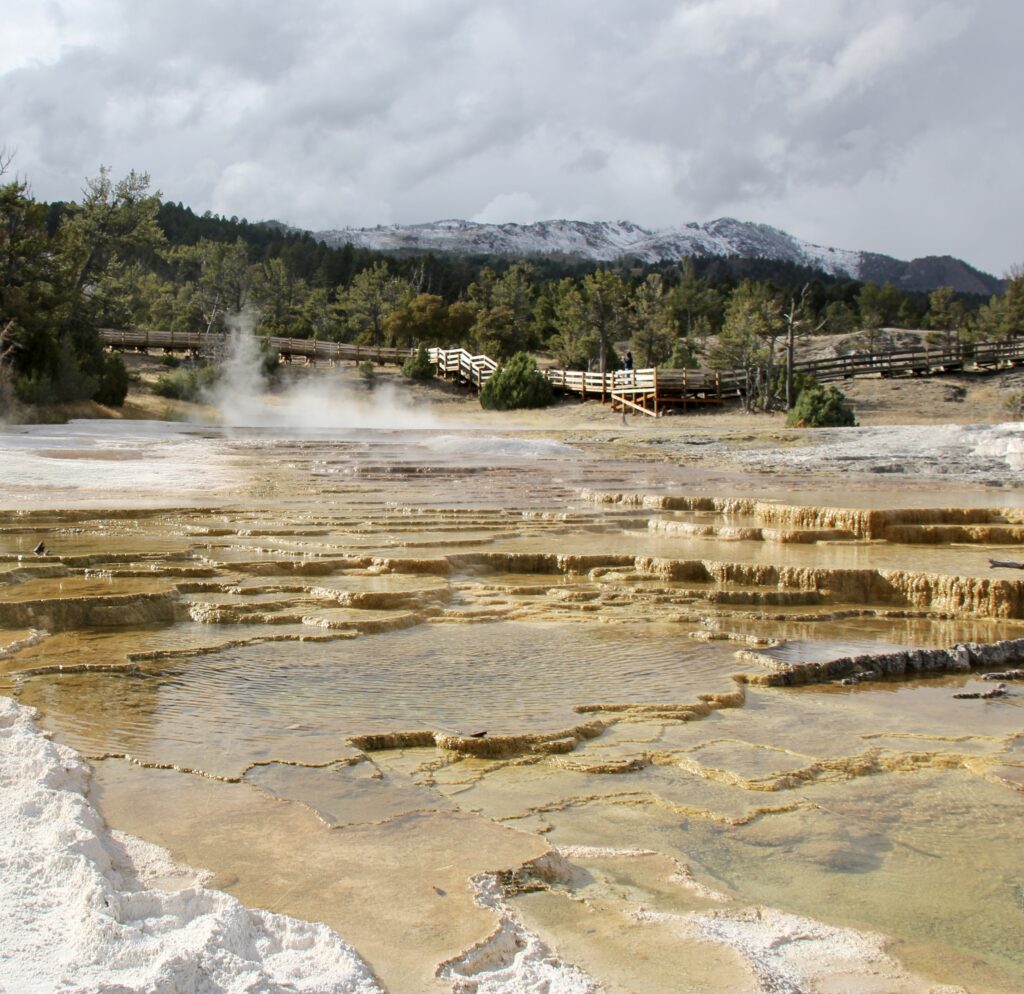
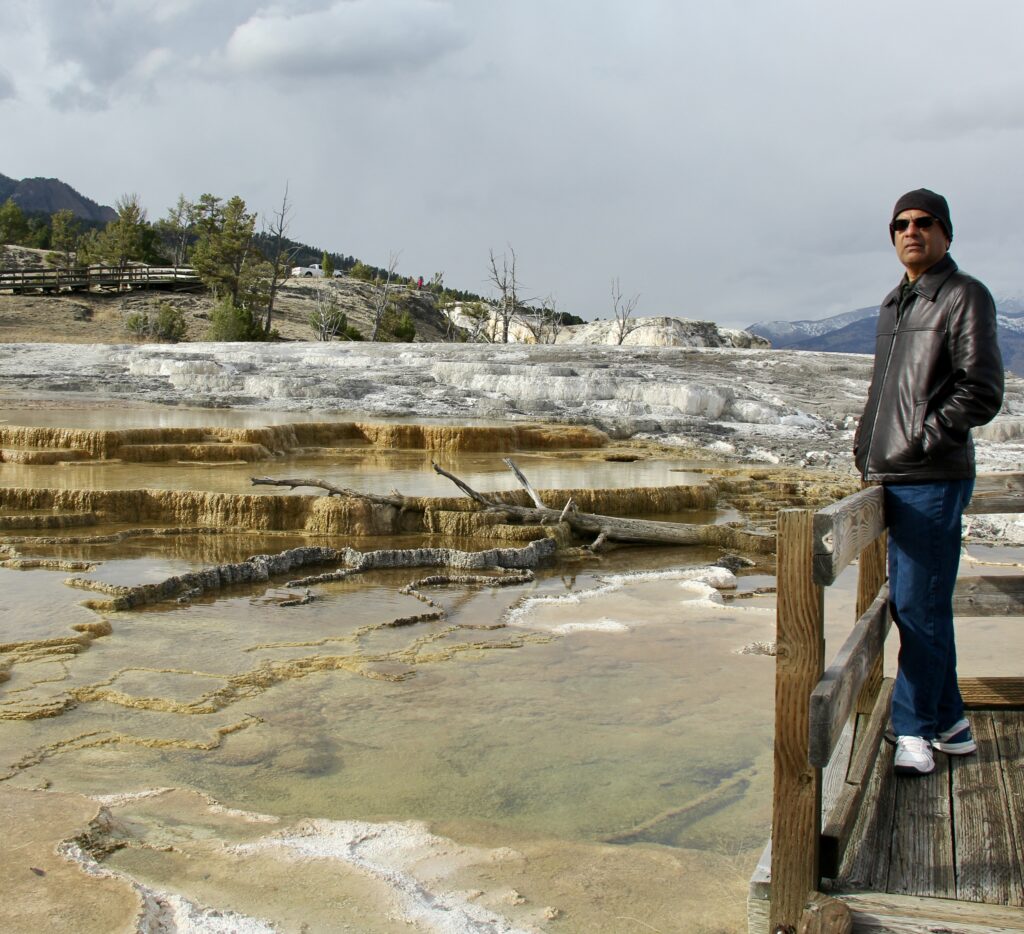
Palette Spring – Named for the way the hot water and thermophilic bacteria create a colorful display that resembles an artist’s palette.
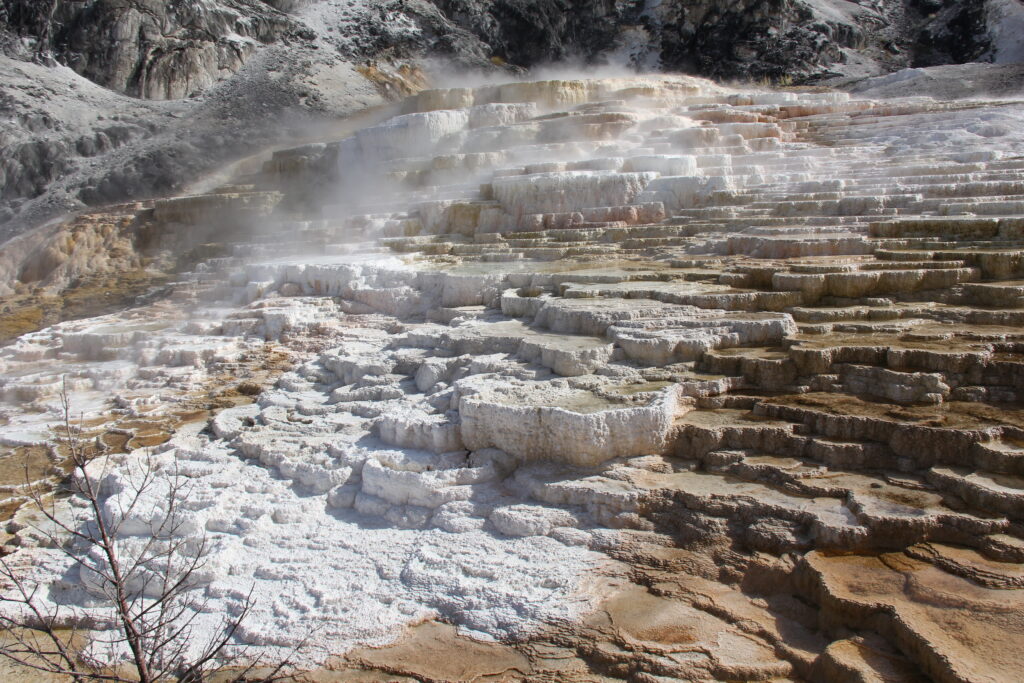
Minerva Terrace – Activity shifts dramatically around this terrace, named for the Roman goddess of artists and sculptors. The cascades of travertine beside the boardwalks were formed in the 1990s. Some years, they are dry. It goes through cycles of activity where there may be no water at all to such large travertine deposits that it covers the boardwalk. The park actually installed a moveable boardwalk just in case.
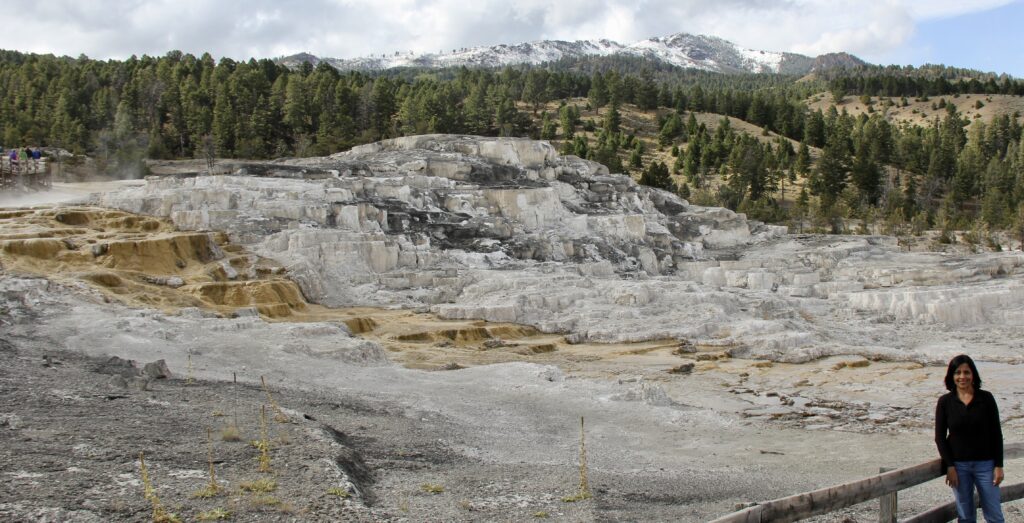
Wildlife in Yellowstone – Yellowstone known for its mammals which include the bison, grizzly bears, gray wolves, elks, pronghorn, bighorn sheep, mountain goats, and mountain lions. The park has 67 different mammal species.
